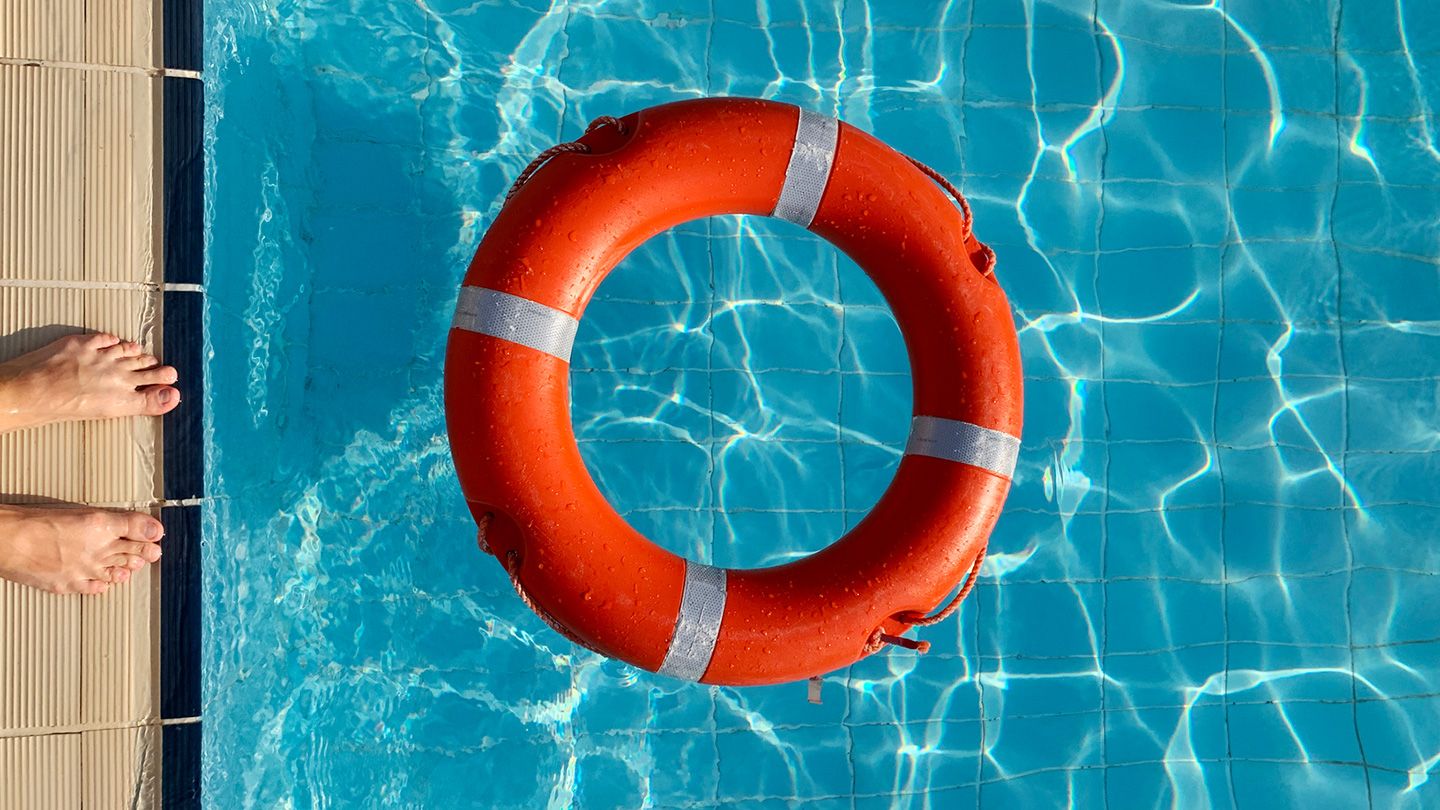When it comes to swimming, safety swim should always be a top priority. Whether you’re a beginner or a seasoned swimmer, understanding the importance of safety measures can make a significant difference in your aquatic experience. In this article, we will delve into the world of safety swim and explore essential techniques, equipment, and precautions to ensure a secure and enjoyable time in the water. So, let’s dive in and discover the key elements that contribute to a safe swim!
1. The Significance of Safety Swim
Ensuring safety during swimming activities is of utmost importance, regardless of one’s experience level. Whether you’re a beginner or an advanced swimmer, understanding the significance of safety measures is crucial for a secure aquatic experience. By adhering to proper safety protocols, you not only minimize the risk of accidents but also enhance your overall enjoyment in the water.
Swimming can pose several potential hazards, including drowning, injuries from falls, and waterborne illnesses. However, with the right knowledge and precautions, these risks can be significantly mitigated. In this article, we will delve into the world of safety swim, exploring essential techniques, equipment, and precautions that contribute to a secure and enjoyable time in the water.
The Importance of Safety
Swimming accidents can have severe consequences, making safety an absolute priority. Drowning, in particular, is a significant concern, accounting for a substantial number of unintentional deaths worldwide. By embracing safety swim practices, we can reduce the occurrence of accidents and create a safer environment for all individuals engaging in aquatic activities.
Not only does prioritizing safety protect swimmers from harm, but it also fosters a sense of confidence and empowerment. By equipping ourselves with the necessary skills and knowledge, we can enjoy swimming activities to the fullest, knowing that we have taken appropriate measures to ensure our well-being.
In the following sections, we will explore various aspects of safety swim, including identifying potential water hazards, mastering essential swimming techniques, selecting appropriate swimwear, and utilizing safety equipment. By understanding and implementing these measures, you can enhance your safety and make the most of your time in the water.
2. Understanding Water Hazards: Identifying Potential Risks
Before engaging in any swimming activity, it is crucial to be aware of potential water hazards to ensure your safety. By identifying and understanding these risks, you can take appropriate precautions and minimize the likelihood of accidents or injuries.
Rip Currents
Rip currents are powerful, narrow channels of water that flow away from the shore. They can catch swimmers off guard, pulling them away from the coastline and into deeper waters. It is essential to be aware of the signs indicating the presence of a rip current, such as a noticeable difference in water color, choppier waves, or an area of calm water amidst breaking waves.
If you find yourself caught in a rip current, it is crucial to remain calm. Avoid swimming against the current as it can exhaust you. Instead, swim parallel to the shoreline until you are out of the rip current’s grip. Once free, swim back to shore at an angle.
Uneven Surfaces
Swimming areas may have uneven surfaces, such as rocks, reefs, or submerged objects. These can pose a risk of injuries if swimmers accidentally collide with them. It is important to familiarize yourself with the swimming area and be cautious when navigating through unfamiliar waters.
Take note of any signage or warnings indicating potential hazards in the area. When swimming in open water, consider wearing swim shoes to protect your feet from sharp objects or rough surfaces.
Submerged Objects
Submerged objects, such as fallen tree branches or debris, can be hidden beneath the water’s surface. These objects may not be immediately visible, increasing the risk of collisions or entanglements. Practicing caution and maintaining situational awareness while swimming can help minimize the chances of encountering submerged objects.
Additionally, it is important to avoid diving headfirst into unknown waters, as there may be submerged objects or shallow areas that can cause serious injuries.
Conclusion
Understanding potential water hazards is essential for ensuring a safe swimming experience. By recognizing the risks associated with rip currents, uneven surfaces, and submerged objects, you can take necessary precautions to protect yourself and others. In the next sections, we will explore essential swimming techniques, suitable swimwear, and other safety measures to further enhance your safety while enjoying your time in the water.
3. Essential Swimming Techniques: Building a Strong Foundation
Mastering proper swimming techniques is key to ensuring safety and efficiency in the water. Whether you are a novice or an experienced swimmer, understanding and practicing these fundamental techniques will greatly contribute to your overall swimming ability.
Proper Breathing Technique
Correct breathing technique is essential for maintaining a steady supply of oxygen while swimming. When swimming freestyle or front crawl, exhale gently through your nose or mouth while your face is submerged in the water. As you turn your head to the side to inhale, take a quick breath without lifting your head too high, ensuring a smooth and continuous rhythm.
For other swimming strokes, such as breaststroke or butterfly, timing your breaths with each stroke cycle is crucial. Practice coordinating your breaths with your arm and leg movements to maintain a steady breathing pattern.
Body Positioning
Maintaining proper body positioning in the water is essential for efficient swimming and reducing drag. Your body should be horizontal, with your head, hips, and legs aligned. Avoid sinking your hips or lifting your head too high, as this can disrupt your balance and slow you down.
Focus on engaging your core muscles to keep your body stable and streamline. Practice gliding through the water with minimal resistance, allowing your body to move smoothly and effortlessly.
Stroke Mechanics
Each swimming stroke has specific techniques that maximize efficiency and speed. Understanding the mechanics of each stroke—such as freestyle, backstroke, breaststroke, and butterfly—will help you swim more effectively and reduce the risk of strain or injury.
Take the time to practice and refine your stroke technique. Seek guidance from qualified swimming instructors or coaches who can provide valuable feedback and help you improve your form.
Conclusion
Mastering essential swimming techniques lays a strong foundation for safe and efficient swimming. By focusing on proper breathing, body positioning, and stroke mechanics, you can enhance your swimming abilities and optimize your performance in the water. In the upcoming sections, we will delve into selecting the right swimwear, understanding the importance of supervision, and other crucial safety measures to ensure a secure and enjoyable swim.
4. Choosing the Right Swimwear: Functionality Meets Style
When it comes to swimming, selecting the appropriate swimwear is not just about fashion; it also plays a significant role in ensuring comfort, mobility, and protection. The right swimwear can enhance your swimming experience while providing essential features to keep you safe in the water.
Comfort and Fit
Comfort is paramount when choosing swimwear. Opt for styles that fit well and allow for a full range of motion without feeling restrictive. Look for adjustable straps, elastic waistbands, and stretchy materials that offer a comfortable and secure fit.
Keep in mind that swimwear may stretch slightly when wet, so choosing a size that fits snugly when dry will ensure it doesn’t become too loose while swimming.
Material and Durability
Swimwear should be made from durable materials that can withstand the rigors of swimming and exposure to chlorine, saltwater, and sunlight. Look for swimwear made from fabrics such as nylon, polyester, or spandex, as they are known for their durability and resistance to fading.
Additionally, consider swimwear with built-in UV protection to shield your skin from harmful sun rays, especially if you plan to swim outdoors.
Appropriate Coverage
The level of coverage provided by swimwear is a personal choice. Some may prefer more modest styles that offer increased coverage, while others may opt for more revealing designs. Whatever your preference, ensure that the swimwear you choose provides adequate coverage for your comfort and aligns with any specific rules or regulations at the swimming facility.
Conclusion
Choosing the right swimwear is essential for both functionality and style. Prioritize comfort, ensuring a proper fit and materials that are durable and provide UV protection. Additionally, consider your preferred level of coverage to ensure your swimwear meets your personal requirements. In the following sections, we will explore the importance of supervision, different safety measures, and equipment that can further enhance your safety while swimming.
5. Life Jackets and Floatation Devices: Ensuring Extra Security
For those who are less confident in their swimming abilities or require additional support in the water, using life jackets or floatation devices can provide an added layer of security. These safety devices help individuals stay afloat, minimize fatigue, and increase buoyancy, making them valuable tools for swimmers of all ages and skill levels.
Life Jackets
Life jackets, also known as personal flotation devices (PFDs), are designed to keep individuals afloat in the water. They come in various styles, including vests and inflatable options. When selecting a life jacket, consider the intended use, such as swimming, boating, or water sports, and ensure it is U.S. Coast Guard-approved for the specific activity.
It is important to choose a life jacket that fits properly and snugly. Check the manufacturer’s guidelines for size and weight recommendations to ensure the most appropriate fit. Regularly inspect and maintain life jackets to ensure they are in good condition and free from any wear or tear.
Floatation Devices
Floatation devices, such as swim noodles, kickboards, and pool floats, can provide additional support and stability in the water. These devices can be particularly useful during swimming lessons, rehabilitation exercises, or when practicing specific swimming techniques.
When using floatation devices, it is essential to remember that they are not a substitute for proper swimming skills or supervision. Always use them under appropriate supervision and gradually reduce reliance on them as your swimming abilities improve.
Conclusion
Life jackets and floatation devices offer an extra layer of security for swimmers, particularly those who may require additional support or are still building their swimming skills. When choosing a life jacket, ensure it is suitable for the intended activity and fits properly. Additionally, use floatation devices responsibly and gradually progress towards swimming without reliance on them. In the upcoming sections, we will explore the importance of supervision, safety measures for different environments, and emergency preparedness to further enhance your safety while enjoying your time in the water.
6. Importance of Supervision: Never Swim Alone
Swimming alone can be dangerous, especially for inexperienced swimmers or in unfamiliar environments. Having appropriate supervision while swimming is crucial to ensure safety and provide immediate assistance in case of emergencies. Whether you are swimming in a pool, open water, or any other aquatic setting, never underestimate the importance of having a designated supervisor or swimming with a buddy.
Designated Supervisor
When swimming in a controlled environment, such as a pool or a designated swimming area, having a designated supervisor is essential. This person should be a responsible and competent swimmer who can actively monitor the swimmers, enforce safety rules, and provide immediate assistance if needed.
The designated supervisor should maintain constant visual contact with the swimmers and be prepared to respond quickly to any emergencies. If you are supervising others, avoid distractions such as using electronic devices or engaging in activities that may divert your attention from the swimmers.
Swimming Buddies
Swimming with a buddy is highly recommended, regardless of your swimming ability. Having a swimming buddy provides an extra layer of safety, as you can watch out for each other and provide immediate assistance if one of you encounters difficulties in the water.
Choose a swimming buddy who is of similar swimming ability or who can adequately assist you if needed. Communicate your swimming plans, stay within each other’s sight, and establish a system to check on each other regularly.
Conclusion
Never underestimate the importance of supervision while swimming. Whether it is a designated supervisor or a swimming buddy, having someone to monitor and assist you can greatly enhance safety in the water. Remember to always swim with a buddy and maintain constant visual contact. In the following sections, we will explore safety measures for different swimming environments, emergency preparedness, and other crucial aspects to ensure a secure and enjoyable swim.
7. Pool and Open Water Safety: Knowing the Differences
Swimming in a pool and swimming in open water present different safety considerations. Understanding these differences is essential for swimmers to adapt their safety measures accordingly. In this section, we will explore the unique aspects of pool and open water safety to ensure a secure swimming experience.
Pool Safety
Swimming in a pool offers a controlled environment with clear boundaries and designated depths. However, it is still important to observe specific safety measures:
- Follow all posted rules and regulations of the pool facility.
- Pay attention to depth markers and avoid diving in shallow areas.
- Be cautious of slippery pool decks and take care when entering or exiting the pool.
- Never swim alone, and always have a designated supervisor or lifeguard present.
- Ensure proper water chemistry and hygiene by regularly testing and maintaining pool water quality.
Open Water Safety
Swimming in open water, such as lakes, rivers, or the ocean, presents additional challenges due to the absence of controlled conditions. Here are important safety considerations:
- Be aware of any potential hazards specific to the open water environment, such as currents, waves, or underwater obstructions.
- Check weather forecasts and be cautious of sudden changes in weather conditions.
- Swim in designated swimming areas whenever possible, where lifeguards may be present.
- Never underestimate the power of currents and tides; if caught in a current, swim parallel to the shore until you can safely escape it.
- Consider wearing a brightly colored swim cap or using a flotation device to increase visibility in open water.
Conclusion
Understanding the differences between pool and open water safety is crucial for adapting your safety measures accordingly. Whether swimming in a pool or open water, always follow specific rules and regulations, have appropriate supervision, and be aware of potential hazards. In the next sections, we will explore important first aid and CPR basics, as well as strategies for monitoring and adapting to weather conditions to further enhance your safety while swimming.
8. Preparing for Emergencies: First Aid and CPR Basics
Being prepared for emergencies is essential when engaging in any water activities. Having a basic understanding of first aid and cardiopulmonary resuscitation (CPR) can make a significant difference in saving lives. In this section, we will cover some key first aid techniques and CPR basics to equip swimmers with the necessary knowledge and skills to respond effectively in critical situations.
First Aid Techniques
Knowing basic first aid techniques can help you provide immediate assistance to someone in need. Some essential first aid techniques for water-related emergencies include:
- Recognizing the signs of drowning and knowing how to respond quickly.
- Administering basic wound care for cuts, scrapes, or injuries sustained in the water.
- Understanding how to stabilize a suspected spinal injury and safely remove a person from the water.
- Knowing how to treat common water-related injuries, such as strains, sprains, or heat-related illnesses.
Cardiopulmonary Resuscitation (CPR)
CPR is a lifesaving technique used to revive someone who has experienced cardiac arrest. If a person is unresponsive and not breathing, performing CPR immediately can help maintain blood flow and oxygen to vital organs until professional medical help arrives. Here are the basic steps of CPR:
- Call emergency services or ask someone nearby to call for help.
- Place the person on a firm, flat surface and begin chest compressions.
- Interlock your fingers and position your hands on the center of the person’s chest.
- Perform compressions at a rate of about 100-120 compressions per minute, allowing the chest to fully rise between compressions.
- If you are trained in CPR, you can also incorporate rescue breaths by tilting the person’s head back slightly, pinching their nose, and giving two breaths into their mouth.
Conclusion
Being prepared for emergencies is crucial when participating in water activities. Familiarize yourself with basic first aid techniques and CPR to ensure you can respond effectively in critical situations. Remember to call for professional help immediately and continue providing assistance until help arrives. In the upcoming sections, we will discuss strategies for monitoring and adapting to weather conditions, as well as other safety measures to further enhance your swimming experience.
9. Weather Conditions: Monitoring and Adapting
Weather conditions can have a significant impact on the safety of swimmers. It is crucial to monitor and adapt to changing weather conditions to ensure a secure swimming experience. In this section, we will discuss the importance of monitoring weather forecasts, recognizing warning signs, and adapting swimming plans accordingly to avoid hazardous situations.
Monitoring Weather Forecasts
Before heading out for a swim, always check the weather forecast for your location. Pay attention to factors such as wind speed, thunderstorm activity, and temperature changes that may impact swimming conditions. Utilize reliable weather sources, including local meteorological services or smartphone applications, to stay informed about any potential weather-related risks.
Recognizing Warning Signs
While monitoring weather forecasts is crucial, it is also essential to recognize warning signs of changing weather conditions while at the swimming location. Pay attention to sudden darkening of the sky, increasing wind intensity, and the presence of lightning or thunder. These signs indicate the need to exit the water immediately and seek shelter.
Additionally, be aware of other natural warning signs, such as rough or choppy waves, sudden temperature drops, or unusual currents. These signs may indicate unsafe swimming conditions and require you to reassess your plans accordingly.
Adapting Swimming Plans
Based on weather conditions and warning signs, it may be necessary to adapt your swimming plans. If thunderstorms are approaching or lightning is detected in the area, it is imperative to seek shelter immediately and avoid any water activities until it is safe to do so.
Similarly, if strong winds create rough water conditions or if the water temperature drops significantly, it may be wise to postpone your swim or opt for alternative activities that do not involve being in the water.
Conclusion
Monitoring and adapting to weather conditions is crucial for ensuring the safety of swimmers. Stay informed about weather forecasts, recognize warning signs while at the swimming location, and be prepared to adapt your swimming plans accordingly. In the final section, we will discuss safety measures specifically tailored to children, including parental supervision, swimming lessons, and child-friendly equipment.
10. Safety Measures for Children: Ensuring a Secure Swim
When it comes to children, extra precautions are necessary to ensure their safety while swimming. Implementing specific safety measures tailored to their needs can provide a secure and enjoyable swimming experience for young swimmers. In this final section, we will explore various safety measures for children, including parental supervision, swimming lessons, and child-friendly equipment.
Parental Supervision
Constant parental supervision is crucial when children are in or near the water. Assign a responsible adult as the designated supervisor, ensuring they have the necessary swimming skills and knowledge to respond to emergencies. The supervisor should maintain constant visual contact with the child, remain within arm’s reach, and actively monitor their activities in the water.
Remember that parental supervision should not be substituted by floatation devices or other safety measures. It is always the primary responsibility of parents or guardians to closely supervise their children around water.
Swimming Lessons
Enrolling children in swimming lessons at an early age can significantly enhance their safety and swimming abilities. Formal swimming lessons provide children with essential water skills, such as floating, basic strokes, and safe entry and exit techniques.
Choose reputable swimming programs or instructors who prioritize safety and employ qualified instructors experienced in teaching children. It is important to continue reinforcing and practicing swimming skills learned during lessons to maintain proficiency and confidence in the water.
Child-Friendly Equipment
Using child-friendly safety equipment can provide additional support and protection for young swimmers. Consider using properly fitted life jackets or floatation devices specifically designed for children. These devices should be U.S. Coast Guard-approved and suitable for the child’s weight and size.
Additionally, utilize child-friendly pool barriers, such as fences or safety gates, to prevent unsupervised access to pools or other bodies of water. Ensure that any pool toys or inflatable devices are age-appropriate, in good condition, and used only under supervision.
Conclusion
Implementing specific safety measures for children is crucial to ensure their safety while swimming. Provide constant parental supervision, enroll them in swimming lessons, and utilize child-friendly safety equipment to create a secure swimming environment. By prioritizing their safety, children can develop confidence, and parents can have peace of mind while enjoying water activities. Remember, the safety of children is a shared responsibility among parents, guardians, and swimming instructors.
In conclusion, prioritizing safety while swimming is paramount for all individuals, regardless of their skill level or age. Understanding potential water hazards, mastering essential swimming techniques, choosing the right swimwear, and utilizing safety equipment are fundamental aspects of ensuring a secure and enjoyable swimming experience. Additionally, having appropriate supervision, monitoring weather conditions, and being prepared for emergencies through first aid and CPR knowledge further enhance safety while swimming.
Whether swimming in a pool or open water, it is crucial to adapt safety measures accordingly and stay vigilant. For children, implementing specific safety measures, including parental supervision, swimming lessons, and child-friendly equipment, is essential to ensure their well-being in and around water.
By following these safety guidelines and incorporating them into your swimming routine, you can mitigate risks and create a safer environment for yourself and others. Remember, safety should always be the top priority when it comes to swimming. So dive in, have fun, and stay safe!

As a passionate water enthusiast, I’ve spent my life exploring the depths of swimming and sharing my experiences with the world. Stroke Swimming is more than just a blog; it’s a deep dive into the world of swimming. Here, you’ll find a treasure trove of information, tips, and insights to help both beginners and seasoned swimmers enhance their skills, knowledge, and appreciation for this timeless art.





